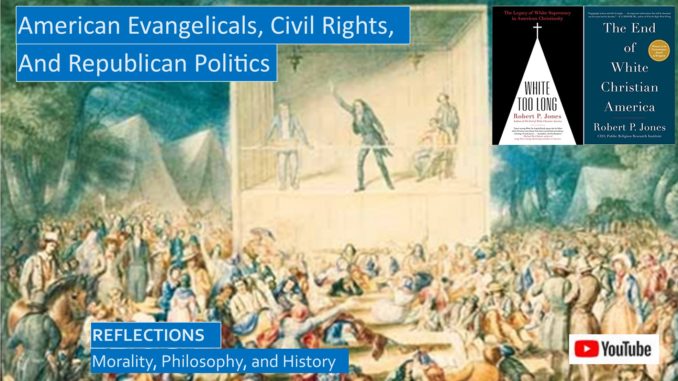
What puzzled many who watched the armed insurrection against the Congress on January 6, 2021, where far-right insurgents were seeking to kidnap and possibly assassinate members of Congress and Vice-President Mike Pence, was how some of the insurgents saw themselves as participating in a Christian cause, carrying crosses and signs like “Jesus is our Savior, Trump is our Leader,” even stopping for group prayer in the Rotunda and in the congressional offices while terrified young staff members trembled in their hiding places, fearing for their lives.
Many American evangelical Christians and leaders still support Trump, even after this attempted insurrection, and indeed support the armed citizen militia insurrection:
https://www.cnn.com/2021/01/19/us/give-send-go-extremism-invs/index.html
https://www.nytimes.com/2021/01/11/us/how-white-evangelical-christians-fused-with-trump-extremism.html
Christianity Today, a leader intellectual evangelical magazine, pushes back:
https://www.christianitytoday.com/ct/2021/january-web-only/trump-capitol-mob-election-politics-magi-not-maga.html
Pope Francis and the leading Catholic magazine, America, the Jesuit Review, also pushes back:
https://www.americamagazine.org/politics-society/2021/01/09/pope-francis-us-capitol-condemn-239686
https://www.americamagazine.org/politics-society/2021/01/20/biden-cupich-gomez-bishops-239779
CHURCH AND SOCIETY: WHO INFLUENCES WHOM?
When we study the history of the Christian Church in America, we must ask ourselves, What role should the Christian Church play in our society, in our culture, in the making of the values of our nation? What role SHOULD the church play? What role DOES the church play? There is always a spiritual contest between the church and our culture, this contest is summed up in the eternal question: Who is going to influence whom? Will the Church succeed in influencing our culture? Or will our culture instead influence the Church?
Quite often our culture has influenced the Church more than the Church has influenced the culture, both for the modern church and the ancient church. Just as a small amount of leaven causes the whole loaf of bread to rise, so we must confuse the greater portion of Christians whose faith is as tepid as dishwater to the small remnant of truly devout Christians who are always the true future of the Church. Public opinion polls of those who identify as Christians often do not reflect the convictions of the small number of Christians who truly believe.
Some of my sources for this blog concentrate on the history of the Southern Baptist Church, and this emphasis is valuable since so many of the Protestant and Catholic Churches often follow the lead of the Southern Baptist in their racial policies, stated and unstated. For example, before the Civil Rights movement many Catholic parishes in New York City and other big cities segregated blacks in their own parishes often far away from their neighborhoods.[1]
The loaf and the leaven metaphor definitely applies to the Southern Baptist Church. Some recent votes at recent conventions do not support the social justice and Black Lives Matter movements. However, the Southern Baptists have enrolled many majority black churches in their denomination, and these black preachers have been able to sway some convention votes to move the Church in the direction of greater social justice. In many denominations the national leadership were ahead of the local leadership and parishioners in civil rights issues.[2]
Robert Jones discusses how evangelical preachers often prefer to preach the necessity of individual salvation. With their emphasis on the eschatological message, THE END IS NEAR, often they avoid promoting or even mentioning the necessity for social justice, since white Christians are either uncomfortable or hostile towards discussions of Black Lives Matter.[3]
We have already covered how Pope Francis is encouraging the Catholic Church worldwide to continue to emphasize the Catholic Church teaching on social justice, which explicitly includes support for the Black Lives Matter movement in America, and explicitly condemn the cruel immigration policies of the Trump regime, in these blogs:
http://www.seekingvirtueandwisdom.com/pope-francis-mentions-abortion-in-gaudete-et-exsultate-with-a-prayer-from-pope-benedict/
Likewise, an understanding of the history of slavery, the Civil War, and the Civil Rights movement is important. We wrote a series of blogs on black civil rights and how race and slavery has dominated American politics from the time of the abolitionists in the 1830’s up until the present day:
http://www.seekingvirtueandwisdom.com/american-civil-rights-history-yale-lecture-notes/
http://www.seekingvirtueandwisdom.com/post-civil-war-reconstruction-and-redemption-history-yale-lecture-notes/
http://www.seekingvirtueandwisdom.com/stories-of-how-slaves-helped-the-union-win-the-civil-war-yale-lecture-notes/
http://www.seekingvirtueandwisdom.com/american-slavery-and-the-abolitionists-yale-lecture-notes/
Please read our blog on our sources consulted for this topic:
www
WHY IS AMERICA IS A RELIGIOUS NATION?
America is a religious nation. Why are Americans are far more likely to attend services and self-identify as Christians or Catholics than Europeans? Many historians believe that the American separation of church and state create a healthy environment for religion to thrive. In many Europe countries the clergy are paid a state salary, which means both clergy and laymen both can become complacent. Also, Professor Allitt (below) observed that in the past many Catholic immigrants who attended mass in America had been agnostic before when they lived in countries like Italy and Spain, because this agnosticism was seen as a protest against the government. American religious enthusiasm blossomed in the were many religious revivals and camp meetings both in the Great Awakening in colonial American and the Second Great Awakening in the early 1800’s.
CHRISTIANITY AND SLAVERY
Another puzzle is why so many Southern white Christians supported slavery before and during the Civil War, and why so many white evangelicals and white Catholics were opposed, or at least did not support, the civil rights movement in the years after the Civil War and the modern era.
Slavery was deeply embedded into the society and culture of the Deep South. Just prior to the Civil War, the total value of slaves exceeded even the total value of land in the most agricultural Deep South. Even those few masters, like Thomas Jefferson a century older, who may have wanted to free their slaves in their wills found it just impossible, these slaves were often pledged as collateral for bank loans that financed the plantations. A slave was as valuable in the antebellum South as an automobile is today.[4] Many schools and churches owned slaves, in historical account a church sold two young slave boys to fund the pastor’s salary and the building fund.[5]
Family fortunes were ruined when too many of their slaves fled in the years before the Civil War. We see this story in the Harriet Tubman movie, her masters had a small farm with only a few dozen slaves that was heavily in debt, struggling to compete with the much larger plantations nearby. We see the matron having a nervous breakdown subjected to the mental stress as Harriet Tubman returned time and time again to deliver from bondage more and more of her enslaved relatives. Harriet Tubman had a price on her head, she would have likely been tortured and lynched if she had been caught.[6]
At the time of the Civil War slavery had existed for all of recorded human history, and the slave trade had only recently been abolished by the British Empire. Indeed, the Bible itself does not condemn slavery, but rather exhorts slaves to obey their masters. However, American slavery was far more cruel than most prior systems of slavery in many ways. Slaves in the Deep South were not seen as truly human, they were treated like talking cattle, they were denied the right to legally marry, their families could be broken up at any time, as many black women were forced to breed young slaves for sale at the auction block. Not only were slaves denied the right to an education, teaching a slave to read was illegal in many parts of the South. Although earlier it was possible for a slave to earn wages and eventually purchase his freedom, and although some masters did free some of their treasured household slaves in their wills, freedom was impossible for most slaves in the decades leading up to the Civil War.[7]
ABOLITIONIST MOVEMENT
In the Northern states, the religious evangelism awakened by the Second Great Awakening inspired the abolitionist movement. Harriet Beecher Stowe wrote Uncle Tom’s Cabin, a novel that helped turn many Northern readers against the cruelty of slavery by describing the sufferings of individual slaves whom the white readers could sympathize. But in the South ministers defended slavery by the many friendly references in both the Old and New Testaments, and the Methodists, Presbyterians and Baptists split into northern and southern churches over the issue of slavery.[8] Though most denominations reunited after the war, the Southern and Northern Baptists are separate denominations even today.
The belief that the negro race was forever inferior to the white race by many whites in both the North and the South, even some of Lincoln’s early speeches conceded the inherent inferiority of negroes. These hateful attitudes were slowly improving during the Civil War and Reconstruction, only to regress under Jim Crow. Many whites cited as Biblical proof the supposition that blacks were descendants of Cain, who God physically marked after he murdered his brother Abel.[9]
The Christianity the slave owners wanted preached to their slaves and the Christian preaching the slaves were eager to hear were very different. The slave owners wanted the preachers to preach the message of Ephesians to their slaves, for slaves to submit to their masters, for slaves to work as faithfully for their masters as they would work for Jesus. The preaching the slaves were eager to hear was the hopeful message when Moses relayed God’s message to old Pharaoh, Let my people go![10]
One of the leading abolitionist orators, Frederick Douglas, a former slave, added this in the appendix to his autobiography when he was challenged for his criticisms of the hypocrisy of many white Christians:
“I mean strictly to apply (my criticisms) to the slave-holding religion of this land, and with no possible reference to Christianity proper; for, between the Christianity of this land, and the Christianity of Christ, I recognize the widest, possible difference, so wide, that to receive the one as good, pure, and holy, is of necessity to reject the other as bad, corrupt, and wicked. To be the friend of the one, is of necessity to be the enemy of the other. I love the pure, peaceable, and impartial Christianity of Christ: I therefore hate the corrupt, slave-holding, women-whipping, cradle-plundering, partial and hypocritical Christianity of this land. Indeed, I can see no reason, but the most deceitful one, for calling the religion of this land Christianity. I look upon it as the climax of all misnomers, the boldest of all frauds, and the grossest of all libels. Never was there a clearer case of ‘stealing the livery of the court of heaven to serve the devil in.’ I am filled with unutterable loathing when I contemplate the religious pomp and show, together with the horrible inconsistencies, which everywhere surround me. We have men-stealers for ministers, women-whippers for missionaries, and cradle-plunderers for church members. The man who wields the blood-clotted cowskin during the week fills the pulpit on Sunday and claims to be a minister of the meek and lowly Jesus. The man who robs me of my earnings at the end of each week meets me as a class-leader on Sunday morning, to show me the way of life, and the path of salvation. He who sells my sister, for purposes of prostitution, stands forth as the pious advocate of purity. He who proclaims it a religious duty to read the Bible denies me the right of learning to read the name of the God who made me. He who is the religious advocate of marriage robs whole millions of its sacred influence and leaves them to the ravages of wholesale pollution. The warm defender of the sacredness of the family relation is the same that scatters whole families, sundering husbands and wives, parents and children, sisters and brothers, leaving the hut vacant, and the hearth desolate. We see the thief preaching against theft, and the adulterer against adultery. We have men sold to build churches, women sold to support the gospel, and babes sold to purchase Bibles for the poor heathen! all for the glory of God and the good of souls! The slave auctioneer’s bell and the church-going bell chime in with each other, and the bitter cries of the heart-broken slave are drowned in the religious shouts of his pious master. Revivals of religion and revivals in the slave-trade go hand in hand together. The slave prison and the church stand near each other. The clanking of fetters and the rattling of chains in the prison, and the pious psalm and solemn prayer in the church, may be heard at the same time. The dealers in the bodies and souls of men erect their stand in the presence of the pulpit, and they mutually help each other. The dealer gives his blood-stained gold to support the pulpit, and the pulpit, in return, covers his infernal business with the garb of Christianity. Here we have religion and robbery the allies of each other, devils dressed in angels’ robes, and hell presenting the semblance of paradise.”
Do we detect some bitterness in Frederick Douglas’ scathing condemnations? Or is this rather justifiable anger and frustration at white hypocrisy? Frederick Douglas tells us how his master who acted cruelly towards his slaves, starving them though he had food plenty in his larders, acted with greater cruelty after his so-called religious conversion. Frederick Douglas tells us how his so-called Christian master treated his lame slave Henny:
“I have said my master found religious sanction for his cruelty. As an example, I will state one of many facts going to prove the charge. I have seen him tie up this lame young woman, and whip her with a heavy cowskin upon her naked shoulders, causing the warm red blood to drip; and, in justification of the bloody deed, he would quote this passage of Scripture: ‘He that knoweth his master’s will, and doeth it not, shall be beaten with many stripes.’
Master would keep this lacerated young, woman tied up in this horrid situation four or five hours at a time. I have known him to tie her up early in the morning, and whip her before breakfast; leave her, go to his store, return at dinner, and whip her again, cutting her in the places already made raw with his cruel lash. The secret of master’s cruelty toward ‘Henny’ is found in the fact of her being almost helpless. When quite a child, she fell into the fire, and burned herself horribly. Her hands were so burnt, that she never got the use of them. She could do very little but bear heavy burdens. She was to master a bill of expense; and as he was a mean man, she was a constant offense to him. He seemed desirous of getting the poor girl out of existence. He gave her away once to his sister; but, being a poor gift, she was not disposed to keep her. Finally, my benevolent master, to use his own words, ‘set her adrift to take care of herself.’ Here was a recently-converted man, holding on upon the mother, and at the same time turning out her helpless child, to starve and die!”[11]
CIVIL WAR AND RECONSTRUCTION
Bibles were found in the knapsacks of both Confederate and Union soldiers killed on the battlefields, both sides were convicted that God was on their side. After the war many Southern preachers were forced to conclude that military victory was not connected to their righteousness. Robert Jones quotes a Southern preacher, “Christ’s enemies could nail Him to the cross, but they could not quench the ideals He embodied. Christ’s cause seemed to be a LOST CAUSE as the darkness fell on the great tragedy at Calvary, but out of what seemed Golgotha’s irretrievable defeat has come the cause whose mission is is to save that which is lost.”[12]
Reconstruction is in three phases. In Presidential Reconstruction under Presidents Lincoln and Johnson, lenient terms enticed the Southern states back into the Union. However, the South overreaches, enacting black codes so harsh that they effectively re-enslave the free blacks to their former masters, denying blacks any rights as citizens. This backfires on the South, outraged Northern voters strengthen the position of the Radical Republican Congressmen, who gain a veto-proof majority in both houses of Congress. The South is placed under military rule, new civil rights legislation is passed, and policies that benefit free blacks are enforced. The Southern states are forced to approve the Reconstruction Amendments that compel the states to grant citizenship, due process of law, and the right to vote to all citizens. But there is mass resistance, the Ku Klux Klan and similar white supremacy bands spring up, terrorizing the South in their night rides and burning crosses, lynchings become commonplace. The Panic of 1873 causes a deep recession, Northern public opinion tires of the endless struggle against the old Confederacy, leading to the final phase, Redemption. Federal troops are withdrawn from the South and the Southerners are free to rule as they see fit, Jim Crow laws are passed denying blacks their civil liberties and their ability to live a normal life with a decent paying job. The KKK and other night riders step up their lynchings to intimidate blacks, in some cases violently overthrowing legitimately elected local governments.[13]
How did the history books in the Deep South describe reconstruction? Robert Jones says, “Reconstruction was presented as a time when white Southerners were victimized by vengeful occupying federal Union forces who supported black politicians primarily to humiliate their defeated enemies.”[14]
During Reconstruction and after the Ku Klux Klan and other similar terrorist groups often murdered and lynched blacks, sometimes burning down their houses, crops and churches. Since white supremacists controlled the police forces and courts, blacks were powerless, totally unable to seek justice, and often if blacks sought justice they were the ones who were jailed for causing a disturbance. Researchers have documented over 4,400 cases of lynching of black men, women, and children who were hung, shot, buried alive, drowned, and beaten to death by white mobs between Reconstruction and the 1950’s, there are likely thousands of instances that have been lost in the sands of time. One example is the lynching of three black men lynched by a mob of a thousand whites in Missouri in the early hours of Easter Sunday, 1906. A memorial summarized the event: “The hanged them. They threw kerosene on them. They burned them to a crisp. And then they went to church.”
THE MYTH OF THE LOST CAUSE AND CONFEDERATE STATUES
Historians often observe that history is written by the winning side of the war. The American Civil War was an exception, the Civil War was the rare conflict where the Confederacy, whose armies were defeated, stubbornly insisted on writing the history of the rebellion not as a struggle to defend slavery, but as a great Lost Cause, a chivalric struggle for states’ rights. The post-war public relations war was fought on many front, including sanitizing the textbooks our school children read and erecting public statues honoring Confederate generals and soldiers:
https://www.theatlantic.com/ideas/archive/2020/06/the-lost-causes-long-legacy/613288/
https://www.thedailybeast.com/how-dixies-history-got-whitewashed
The UDC, or United Daughters of the Confederacy, was a leading force in promoting the myth of the Lost Cause, with over 100,000 members during World War I. The UDC placed thousands of portraits of General Robert E Lee and Jefferson Davis, president of the Confederacy, in public schools across the South, lobbied for making the Confederate Memorial Day a school holiday in many states, and wrote white supremacist primers for school children on the Ku Klux Klan.[15] The UDC even issued a Confederate Catechism in a Q&A format so children could memorize the proper answers. These included:
“Q: How were slaves treated?
A: With great kindness and care in nearly all cases, a cruel master being rare, and lost the respect of his neighbors if he treated his slaves badly.”
“Q: What was the feeling of the slaves toward their masters?
A: The slaves were faithful and devoted and were always ready and willing to serve their masters.”
“Q: What causes led to the war between the States?
A: The disregard, on the part of the States of the North, for the rights of the Southern or slave-holding States.”[16]
The UDC drive to remember the Confederate Lost Cause was successful, there are over 1,700 Confederate statues and monuments in the South and bordering states, most of them erected during the Jim Crow years to intimidate blacks into submission.[17] There were even stain-glassed windows honoring Confederate Generals Robert E Lee and Stonewall Jackson in the National Cathedral in Washington, DC, and other national churches.[18]
INTIMIDATION AND VIOLENCE IN THE SIXTIES CIVIL RIGHTS MOVEMENT
Though churches were never forced legally to integrate as schools and restaurants were, some blacks sought to break the color barrier in Deep South evangelical, efforts which were sometimes met by intimidation and violence. For example, in Jackson, Mississippi city council passed an ordinance in 1963 defending segregation by criminalizing church attendance, making “disturbing divine worship” a crime. This was enforced aggressively. Both the blacks who dared sit in the white pews as well as the white people who invited them were literally dragged from the pews during the church service, fined thrown in prison.[19]
Violence doomed Medgar Evers, who with a white chaplain attempted to cross the color line at the home congregations of the white governor and white mayor. In one church the pastor threatened to resign if blacks were barred from sitting in their white pews, but the church council of the other church unanimously voted to block blacks from attending their white church. This protest was cut short.
That night Medgar Evers was working late at his church before driving home to be with his wife and three young children. But Medgar did not make it into his house. Someone was waiting, someone had been waiting for quite some time. At midnight, Medgar Ever opened the door of his car, and while walking up the driveway of his home, some distance away, Byron Beckwith, a well-known local white supremacist, identified by his fingerprint on the rifle scope, carefully aimed, and shot Medgar Evers stone-cold dead.
Byron had earlier had this letter to the editor accepted by local newspaper:
“I shall oppose any person, place, or thing that opposes segregation. And further, when I die, I will be buried in a segregated cemetery. When you get to heaven, you will find me in the “whites only” section, and I go to Hades, I’m going to raise hell all over Hades until I get to the white section. We here in Mississippi are going to have to do a lot of shooting to protect our wives, children, and ourselves from bad niggers.”
The fact a local newspaper would print a letter like this reveals how resolutely the great majority of whites in the Deep South opposed any kind of integration. Nobody disputed the identity of the killer. The killer was twice tried, and twice the jury was hung. A third trial finally convicted Byron Beckwith, the murderer, thirty years later.[20]
Faced with violent white opposition and yawns by white evangelical pastors, Martin Luther King, in his letter from his Birmingham jail cell, wrote this:
“On sweltering summer days and crisp autumn mornings I have looked at the South’s beautiful churches with their lofty spires pointing heavenward. . . Over and over I have found myself asking: “What kind of people worship here? Who is their God? . . . Where were they when Governor Wallace gave a clarion call for defiance and hatred? Where were their voices of support when bruised and weary Negro men and women decided to rise from the dark dungeons of complacency to the bright hills of creative protest?”[21]
NIXON’S SOUTHERN STRATEGY AND EVANGELICISM
Franklin Delano Roosevelt, or FDR, was the only President elected for four terms during the Depression and World War II based on a fragile Democratic coalition of Southern racist segregationists and New Deal reformers, including Civil Right activists encouraged by his activist wife Eleanor Roosevelt. This was a fragile coalition that was shattered when the next President Harry Truman issued an Executive Order forcibly integrating the military services.
For the 1948 election the Deep South segregationists bolted and formed the short-lived Dixiecrat Party. The party’s main plank, written by Senator Strom Thurmond, included many issues which resonate in Republican Party politics today:
“We stand for the segregation of the races and the racial integrity of each race; the constitutional right to choose one’s associates; to accept private employment without governmental interference, and to earn one’s living in any lawful way. We oppose the elimination of segregation, the repeal of miscegenation (black-white marriage) statutes, the control of private employment by Federal bureaucrats called for by the misnamed civil rights program. We favor home-rule, local self-government and a minimum interference with individual rights.”[22]
The history of Nazi Germany is a warning that if white supremacists succeed in grabbing control of our government for a decade or more, many civil rights achievements could be rolled back.
http://www.seekingvirtueandwisdom.com/christians-coping-under-fascism-in-wwii-warnings-for-christians-under-trump/
The Great White Switch began in the 1964 Presidential campaign where the Republican candidate Barry Goldwater explicitly opposed civil rights legislation. Although he lost heavily to LBJ, for the first time since the Civil War more whites voted for the Republican than the Democratic candidate. For the 1968 Presidential campaign, Richard Nixon assured Southern support by promising Strom Thurmond that the Republicans would oppose busing to integrate schools, name a Southerner to the Supreme Court, and pick a Vice-President acceptable to the South.
The unpopularity of the Vietnam War and the Watergate scandal tarnished the image of the Republican Party. Furthermore, Jimmy Carter, the Democratic candidate for the 1976 election, was a small-town born-again Southern Baptist. Initially white evangelical voters in the South were enthusiastic about his born-again Presidency, but they soured when Carter was on the wrong side of many policies dear to the white evangelical voter. Carter refused to roll back civil rights and support the women-rights ERA amendment, and did not push back on the Supreme Court decision opposing prayer in schools.
Jerry Falwell, Baptist preacher and founder of the Moral Majority, launched in 1976 the “I Love America” rallies linking his faith to a political agenda, opposing feminism, homosexuality, and pornography. In the next Presidential election of 1980 Falwell supported the non-religious divorcee Republican candidate, Ronald Ragan, spurning Jimmy Carter. The Moral Majority ran ten million dollars of political ads supporting Reagan, encouraging many white evangelicals to change their party affiliation to Republican. By the time of the Bush campaign of 2004, eighty percent of white evangelicals voted Republican.[23]
RISE OF THE TEA PARTY
In reaction to President Obama’s win in the 2008 election and the bank bailouts rushed through to prevent a second economic depression, the Tea Party movement rose up in protest, and was quickly dominated by white supremacist elements. Ugly racist T-shirts were hawked at Tea Party rallies showing Obama as a witch doctor or as a mugger strangling Uncle Sam. Many Tea Party supporters were white evangelicals who opposed abortion and same-sex marriage. Egged on by enthusiastic support by the opinionators at Fox News they opposed ObamaCare, though polls revealed many supported the Affordable Care Plan, suggesting they opposed the black president rather than the policy. Polling showed that three-quarters of Tea Party members agreed with the statement, “Today discrimination against whites has become as big a problem as discrimination against blacks and other minorities.”[24]
The Tea Party activists had high hopes when Mitt Romney ran for President in the 2012 election, they were in a state of shock on election night. Romney exceeded most of his electoral targets, he increased his margins among white voters to an impressive twenty points, nearly double the margin McCain won in the previous election, and won a remarkable eighty percent of the white Protestant vote, and Republican voter turnout was as high as usual.
Why did Romney lose the election? The traditional Republican coalition, heavily dependent on white Christians, were simply no longer majority of Americans. Black voter turnout jumped between 2008 and 2012, and for the first time the black turnout percentage was greater than the white turnout percentage. Also, about three-quarters of the growing Hispanic electorate voted Democratic. The GOP post-mortem report concluded that the Republican Party needed to be more inclusive if it wanted a long-term future in American politics, but activists rejected this inclusivity, saying this was unwanted advice from the party elites.[25]
TURNING POINT? EMANUEL AME CHURCH IN CHARLESTON
In 2015 Dylann Roof sought to start a race war, wrapping himself up in the Confederate flag, but instead sparked a movement condemning white supremacy, seeking to remove Confederate symbols from state flags and state capitols and speeding up the removal of Confederate statues and monuments. Dylann walked into a black church during a Bible study, listening for about an hour. Then he got into an argument, ranting about black Americans, and then pulled out his gun, threatening them. “One of the members pleaded with him not to hurt anyone, saying, ‘You don’t have to do this.’ The twenty-one year-old replied coolly, ‘Yes I do. You are raping our women and taking over the country.’ Roof then opened fire, killing nine church members, including the pastor. . . Roof deliberately spared one woman, telling her the he was going to let her live so she could tell the story of what happened.”
What was especially troubling about this incident was Dylan was an active member of a mainstream ELCA Lutheran Church, and had drawn several icons from the Orthodox tradition in a jail-cell journal. Although the Lutheran Church is mostly a white church, it is more moderate than many evangelical churches. He was not radicalized at church, he was radicalized by Christian nationalist websites on the internet.
Soon after this tragedy, Governor Nikki Haley had the legislature remove the Confederate flag from the state capitol grounds, arguing that it should only be displayed inside a museum. She said, “No one should drive by the statehouse, (see the Confederate flag waving), and feel pain. No one should drive by the statehouse and feel like the do not belong.”[26]
The effort to remove four Confederate statues in Baton Rouge, Louisiana turned into a two-year ordeal. Governor Landrieu had to fight legal challenges in multiple courts and appeals, he received many hate letters and death threats, and lost half of his white support during the struggle. The state could only find one African American contractor willing to take down the statues, his car was torched, sand was poured into the gas tanks of his cranes. A security firm with experience guarding construction sites in war-zones was hired, police SWAT teams with sharpshooters guarded the construction crews, construction workers wore bullet-proof vests and masks, and license plate numbers of the crew were covered.[27]
ARE THERE CONNECTIONS BETWEEN THE ABORTION AND CIVIL RIGHTS MOVEMENT?
Many White Protestants felt threatened by both the Civil Right movement and by Catholicism, the Ku Klux Klan terrorized both Catholics and Jews as well as blacks. But JFK’s election as the first Catholic President in 1960 and his popularity helped secure a place for Catholicism in the American culture. While many liberal Protestants and Catholic clergy and laymen marched with the civil rights protesters, white evangelical Protestants were either hostile towards the civil rights movement or counseled infinite patience. White evangelical Protestants prefer to emphasize personal salvation in preparation for the end-times. If the end-times are soon, why do we need to worry about civil rights and social justice?
Evangelical Protestants and Catholics would not start cooperating until the 1970s. They would eventually find common cause in the emerging culture war issues, abortion, gay rights, and prayer in public schools. Before this time abortion was not a big issue for Protestants, the Southern Baptist Convention passed a resolution in 1971 that permitted abortion in case of rape, incest, and “damage to the emotional, mental, and physical health of the mother.”[28]
Robert P Jones writes, “The earliest phase of the Christian Right movement didn’t bridge the Protestant-Catholic divide. But when Protestant Christian Right leaders such as Jerry Falwell Sr. followed the advice of Catholic political activist Paul Wyrich to include opposition to abortion as a leading issue for the nascent Christian Right movement in the late 1970’s, as white Protestants were increasingly fleeing the Democratic Party over its support for civil rights, old antipathies quickly gave way to the promise of new political alliances.”[29]
The major logical fallacy regarding the abortion debate is that pro-life and pro-choice are opposing positions. This makes no sense, the true opposite of pro-life is pro-death, and nobody is eager to kill babies. This blog demonstrates that you can be a compassionate Christian and be both pro-life and pro-choice:
www
EVANGELICAL CHURCH AND DONALD TRUMP
For the past few decades most white Christians continue to vote Republican, while most black and mixed Christians vote Democratic, often by wide margins. Polls takes by Robert Jones shows that 81% of white evangelicals voted for Trump in 2016. The support for Trump was less extreme in the Catholic Church where 64% of whites voted Republican, and 57% of white mainline Protestants voted for Trump. Robert Jones says, “Trump’s own racism allowed him to do what other candidates couldn’t: solidify the support of a majority of white Christians, not despite, but through appeals to white supremacy.[30] During the Presidential debate he called for his Proud Boys to stand back and stand by, which they did, and they and other white supremacists stormed the Capitol building after Trump incited them to attempt an insurrection and coup on his behalf. Blood was shed, lives were lost, police were beaten, and many congressmen and Mike Pence cowered in fear, fearing death.
[1] Robert P Jones, White Too Long (New York: Simon and Schuster, 2020), pp. 7-8.
[2] Robert P Jones, White Too Long, p. 41.
[3] Robert P Jones, White Too Long, p9. 97-101, 105.
[4] Slaves are valuable, see my slavery blogs
[5] Robert P Jones, White Too Long, p. 205.
[6] https://www.imdb.com/title/tt4648786/
[7] http://www.seekingvirtueandwisdom.com/american-slavery-and-the-abolitionists-yale-lecture-notes/
[8] Patrick Allitt, American Religious History (The Great Courses, 2001), Lecture 11, African-American Religion,
https://www.thegreatcourses.com/courses/american-religious-history.html
[9] Robert P Jones, White Too Long, p. 17.
[10] https://www.youtube.com/watch?v=vf6jBP4YXwo , Robert P Jones, White Too Long, p. 77.
[11] From the Appendix of The Narrative of the Life of Frederick Douglas, https://docsouth.unc.edu/neh/douglass/douglass.html , and quoted in Robert P Jones, White Too Long, pp. 85-87.
[12] Robert P Jones, White Too Long, pp. 90-91.
[13] http://www.seekingvirtueandwisdom.com/post-civil-war-reconstruction-and-redemption-history-yale-lecture-notes/
[14] Robert P Jones, White Too Long, p. 5.
[15] Robert P Jones, White Too Long, p. 114.
[16] Robert P Jones, White Too Long, p. 123-125.
[17] Robert P Jones, White Too Long, p. 119-120.
[18] Robert P Jones, White Too Long, p. 126-130.
[19] Robert P Jones, White Too Long, p. 43.
[20] Robert P Jones, White Too Long, pp. 44-46.
[21] Robert P Jones, White Too Long, pp. 96-97, https://www.theatlantic.com/magazine/archive/2018/02/letter-from-a-birmingham-jail/552461/
[22] Robert P Jones, White Too Long, p. 133.
[23] Robert P Jones, The End of White Christian America (New York: Simon and Schuster, 2016), pp. 88-93.
[24] Robert P Jones, The End of White Christian America, pp. 94-97.
[25] Robert P Jones, The End of White Christian America, pp. 98-103.
[26] Robert P Jones, White Too Long, p. 137-145.
[27] Robert P Jones, White Too Long, p. 149-153.
[28] Robert P Jones, The End of White Christian America, pp. 64-66.
[29] Robert P Jones, White Too Long, p. 9.
[30] Robert P Jones, White Too Long, p. 15.

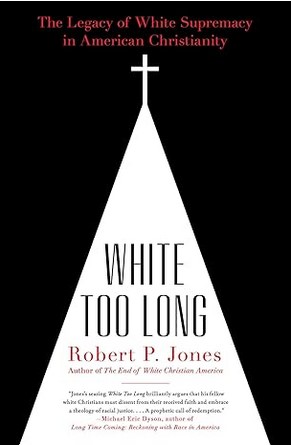
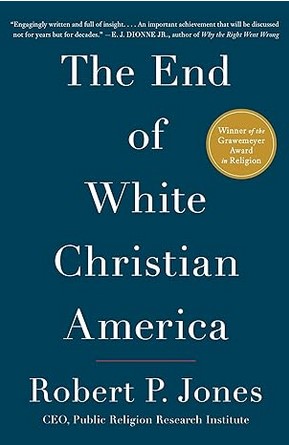
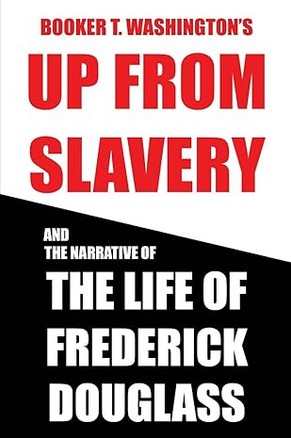
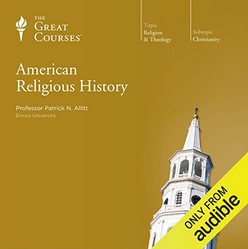
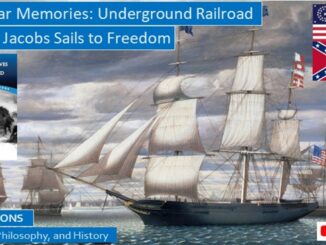
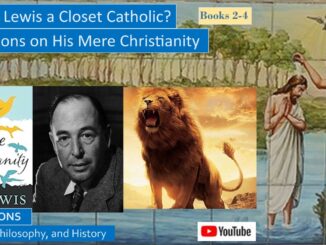
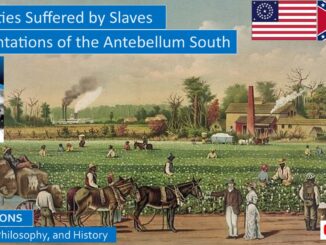
4 Trackbacks / Pingbacks